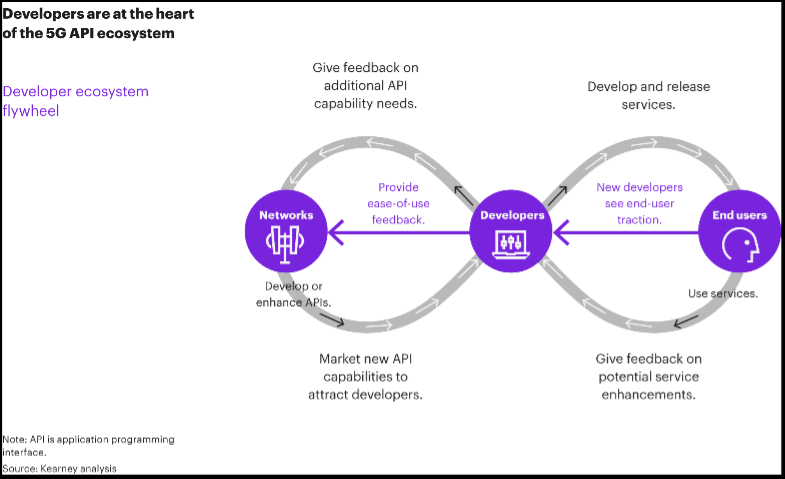What do operators need to do to succeed with network APIs having missed earlier API-based opportunities?
As communication service providers (CSPs) adjust to the evolving digital landscape, leaders are looking beyond traditional business models for growth. While many are consumed by today’s tactical challenges, they could be missing out on capturing opportunities, especially 5G. APIs are the key to unlocking the sector’s ability to capitalise on its investments and a new era of growth.
The industry gathered for TM Forum’s DTW conference in Copenhagen in June after a series of announcements about alliances and aggregators’ agreements with operators to collaborate on network APIs. For instance, Vonage’s partnership with Telstra.
It was encouraging to see CSPs share the stage with ecosystem partners, collectively bringing the whole product. A great example of this was the launch of Glide API, with leaders from Google Cloud, Telefonica, Orange and the GSMA presenting with the startup. This industry has a history of successful collaboration on technology innovation through fora such as 3GPP, GSMA, TM Forum and others. It has been less successful at collaborating on impactful innovations for business models. We must get that right this time.
People are already engaging with the ecosystem economy like in-app purchases and juggling many accounts. We have the technology to optimise underlying tech, like 5G standalone cores and network slicing, for connectivity. Developers want to innovate by leveraging great networks around the world (see Kearney’s recent developer study on 5G APIs). In other words, the industry is primed for change.
Driving innovation with 5G APIs
APIs are tools used for communication and interaction between different software applications and systems. In the context of 5G and other network standards, APIs provide developers with standardised interfaces to provision access to and leverage networks’ capabilities. A developer could, for example, embed network functionality in their apps supporting ID verification and assuring optimal network experience for the service. This creates an opportunity to make money not only for the CSPs, aggregators and marketplaces that facilitate the exposure, but also for the developers and companies embedding this functionality in their solutions.
APIs are not new. They are successful across sectors like banking, logistics and even telecommunications, accelerating speed to market and enabling innovation across a much broader developer community. In telecom, we have seen the birth of the Communication Platform-as-a-Service (CPaaS), where companies like Twilio moved monolithic services into the cloud age, most notably for SMSs.
Now emerging network APIs allow us to put the end user front and centre, so developers can create amazing experiences taking advantage of the latest network features.
Industry readiness
Despite the clear benefits and potential new revenue streams, whether telecoms can capitalise on this opportunity remains in question. According to a report from GSA in May, only 49 operators globally (fewer than 10%) have invested in 5G Standalone cores which are required for the highest value features such as network slicing.
Ultimately, this is not about technology though. Collaboration within the ecosystem is critical to establish channels to vibrant developer communities. We need a multi-channel marketplace where CSPs, marketplaces, aggregators and other platform players co-exist, collectively solving the supply of and demand for network services. They share the responsibility for making it effortless for developers to integrate network APIs.
There is a clear demand from developers for using network APIs to enhance their end users’ experiences. Kearney’s 5G API Developer Study revealed that 60% of surveyed developers would integrate 5G APIs within a year if given the opportunity, with 63% recognising the value 5G connectivity could bring to their projects.
This demonstrates strong market potential, contingent on CSPs’ effectively engaging with and supporting the developer community to make it actual.
Strategies for API adoption
CSPs’ teams are typically organised around consumers and enterprises – now they must deal with developers too. The developer often decides which API-based services to select and incorporate – and there is an estimated almost 26 million developers globally, so this segment requires real attention.
Creating a culture of collaboration and knowledge-sharing between CSPs and developers is essential. In Kearney’s interviews with developers for its developer study, many expressed a reluctance to collaborate with CSPs due to a perceived lack of transparency and alignment with their objectives.
CSPs can address this by actively engaging in developer communities, understanding developers’ concerns, ensuring their APIs are widely available and evangelising the benefits of the services. We often talk about a developer flywheel effect (see figure 1), where the close dialogue with the developer community not only propels growth through word-of-mouth recommendations, but also improves the offered services based on feedback from the community. Now, let’s get this flywheel spinning.

Figure 1. Developer Ecosystem Flywheel
Download Kearney’s developer study on 5G APIs here.
Download Kearney’s latest annual 5G readiness report here.



